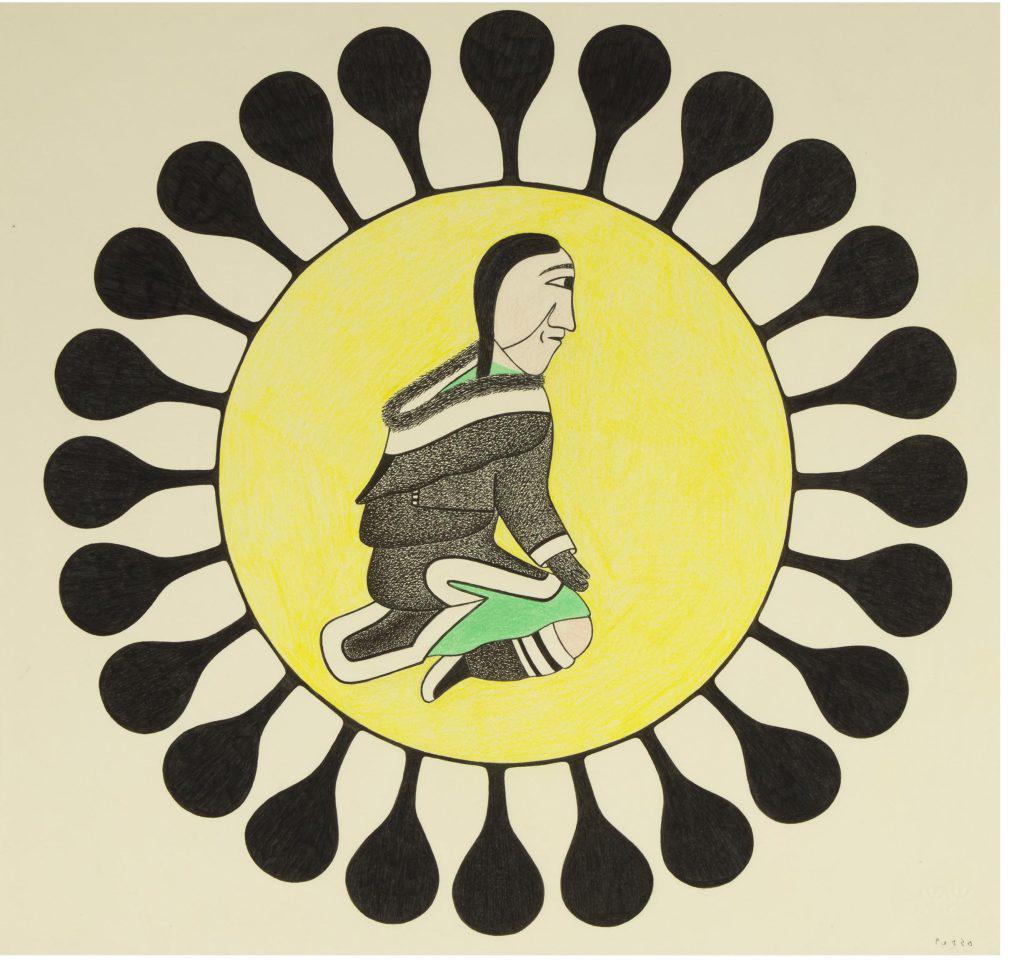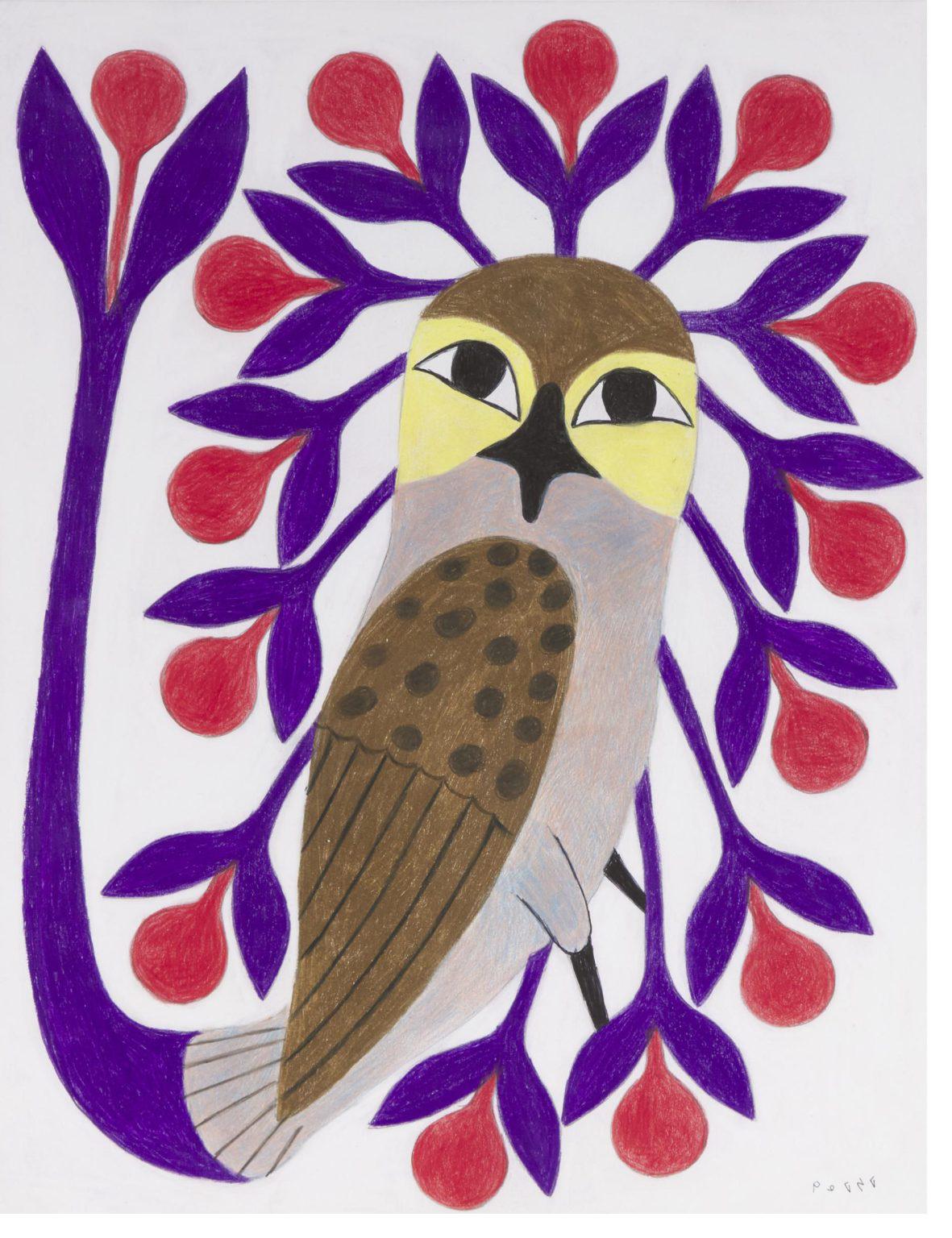UNTITLED (WOMAN KNEELING), 1994/1995
This example is notable for its relation to the artist’s famous 1960 stonecut, The Woman Who Lives in the Sun. Though this drawing was made over 30 years later, the bulbous rays which flank the central composition can be seen to be more refined and decorative versions of that earlier sun’s blaze.
In the Inuit cosmology, the sun is identified as female while the moon is male, in direct contrast to most other cultures’ reversed gender roles. Though narratives vary across the vast territory of the Arctic, the broad myth tells of two siblings, the moon-brother (Taqqiq) and his sun-sister (Siqniq). Taqqiq – either accidentally or on purpose – fondles or has sex with Siqniq. In retaliation, she lights a torch and chases him around the community to shame him. The moon, not to be outdone, chases her in return, and the two run so far that they end up in the sky to pursue each other for eternity. (1)

For the Inuit, the sun is largely absent for much of the year and is not relied on for agriculture or even wayfinding – an Arctic moon is a perfectly adequate substitute for hunters in deep winter. Yet the sun’s return after the long polar night is marked by special festivities and rituals, signifying the beginning of a new year and the return of easier hunting conditions. Lengthening days are cause for happiness and celebration in the Arctic, which might have prompted Kenojuak to draw this portrait of a woman kneeling in the sun.
UNTITLED (OWL), 2010
Owls never ceased to interest Kenojuak, from her earliest creations to those made at the end of her life. She used them as a subject for over 100 different prints as well as her original drawings, as on offer here. In return, they would define many of the pinnacles of her celebrated career, including her Enchanted Owl, which smashed market records for the artist’s work at auction when sold at Waddington’s in 2018 for $216,000.
Beginning in the early 1960s, Kenojuak introduced foliage and flowers to enhance her avian images and their often fantastically-hued plumage. In this drawing, Kenojuak’s owl is naturalistically coloured in brown, grey and yellow, while the buds which flank it burst forth into bright purple and red.

Notably, Kenojuak used coloured pencil instead of felt-tip marker in Untitled (Owl) which allowed her to create smooth panes of colour, echoing the pleasing flatness of many of her printed editions. Regarding her choice of colours, in 1980, Kenojuak told Jean Blodgett: “The colours are part of an informal system that I have. I select two colours that will go side by side, lining them up, saying that these two look good together. I use that system for my colouring and don’t change it halfway through the drawing.” (2)
ABOUT THE AUCTION
Held online from May 24-29, 2024, Waddington’s is pleased to present our major spring auction of exceptional Inuit & First Nations Art. Important artworks this season include works of sculpture and graphics by Karoo Ashevak, Jessie Oonark, Kiakshuk, John Pangnark, Pauta Saila, Aisa Qupirualu Alasua, Parr, Osuitok Ipeelee, Kiugak Ashoona, Joe Talirunili, John Kavik, Kenojuak Ashevak, Johnny Inukpuk, Thomas Ugjuk, Ennutsiak, Davidialuk Alasua Amittu, Beau Dick, Charlie James, David Ruben Piqtoukun, Abraham Apakark Anghik, Manasie Akpaliapik, Judas Ullulaq, Barnabus Arnasungaaq, and John Tiktak.


